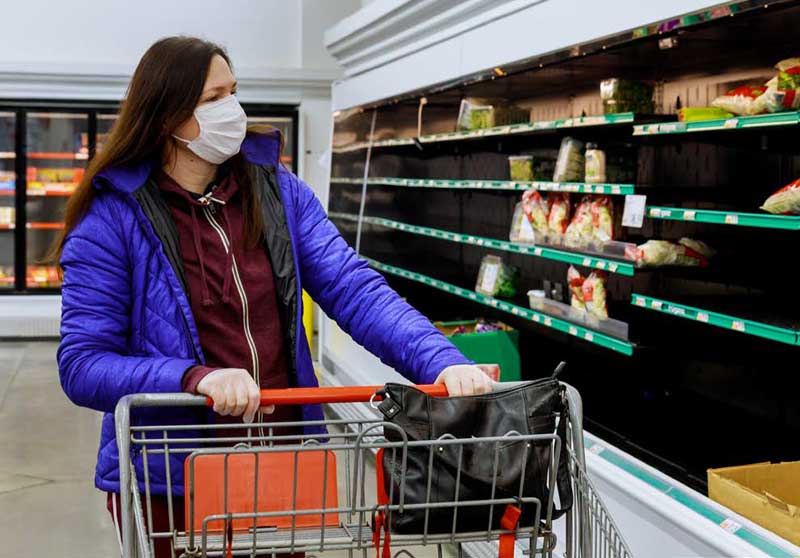
January 2022
Alston & Bird LLP and Aflac
Congress and federal regulators have adopted a broad range of temporary policies designed to address the new conditions brought about by the COVID-19 pandemic.
What to know:
Since the effective and expiration dates are unique for each provision, this guide can help employers to know what expires when.
Temporary COVID-19 relief provisions have differing effective dates. This guide can help employers to know what expires when.

Expiration date of provisions not tied to the COVID-19 public health or national emergency
| Health Savings Accounts (HSAs) and High Deductible Health Plans (HDHPs) | ||
|---|---|---|
|
Provision |
Source |
Effective Date |
| HSA-qualifying HDHPs can cover telehealth and other remote care services before the deductible is met without jeopardizing eligibility for HSA contributions. | Coronavirus Aid, Relief, and Economic Security (CARES) Act | Applies to plan years prior to Jan. 1, 2022. |
| HSA-qualifying HDHPs can cover COVID-19 testing and treatment before the deductible is met without jeopardizing eligibility for HSA contributions. | IRS Notice 2020-15 | Applies until further guidance is issued. |
| Health Flexible Spending Arrangements (FSAs) and Dependent Care Assistance Plans (DCAPs) | ||
|---|---|---|
|
Provision |
Source |
Effective Date |
| A health FSA or DCAP may allow either a carryover of unused balances to the next plan year or a grace period of up to 12 months (instead of the usual 2 1/2 months) for participants to incur expenses toward any unused balance. | Consolidated Appropriations Act, 2021 (CAA) | Effective for plan years ending in 2020 or 2021. |
| Health FSAs may permit plan participants who terminate participation in the plan to spend down unused balances for expenses incurred through the end of the plan year in which the termination occurred. | CAA | Effective for terminations of participation in calendar year 2020 or 2021. |
| Increase in DCAP balance from $5,000 to $10,500. | American Rescue Plan Act (ARPA) | Effective for calendar year 2021. |
| Temporary expansion of eligible DCAP dependent age to age 13 (normally age 12). | CAA | Applies for calendar year 2020; also applies for 2021 but only for unused 2020 DCAP grace period or carryover amounts. |
| 100% premium subsidy for COBRA coverage. | ARPA | April 1, 2020 through Sept. 30, 2020. |

Provisions tied to the public health emergency and/or the national emergency
|
Provision |
Source |
Effective Date* |
| COVID-19 testing: Group health plans must cover COVID-19 testing and related services without imposing cost-sharing, requiring prior authorization or imposing other medical management standards. | Families First Coronavirus Relief Act (FFCRA), as amended by the CARES Act | During the COVID-19 public health emergency. |
| COVID-19 vaccine: Rapid coverage of COVID-19 vaccines and related services is required preventive care for non-grandfathered plans. | CARES Act as implemented by regulations | Generally during the COVID-19 public health emergency. |
| Employee assistance programs: EAPs may qualify as an excepted benefit and therefore are not subject to Affordable Care Act requirements, even if coverage for COVID-19 diagnostic testing is provided through the EAP. | FAQs issued April 11, 2020, Q&A 11 | During the COVID-19 public health emergency and national emergency. |
| Stand-alone telehealth: Large employers may offer stand-alone telehealth and other remote care benefits to employees not eligible for coverage under any other group health plan of the employer without having to comply with most of the ACA requirements. | FAQs issued June 23, 2020, Q&A 14 | Plan years beginning before the end of the COVID-19 public health emergency. |
| Time frame extensions: When applying certain time frames, the “outbreak period” is disregarded, so that the time frame for certain required actions and notices is extended. This impacts the time for filing claims and appeals under group health plans, health FSA and HSA runout periods, and COBRA elections, among other time frames. | Various guidance, including: IRS Notice 2021-58 (COBRA); Disaster Relief Notice 2021-01; DOL and IRS Joint Notice May 4, 2020 |
The outbreak period is generally the earlier of one year after the otherwise applicable date (i.e., when a notice was first eligible for tolling relief) or 60 days after the end of the COVID-19 national emergency. |
| Advanced notice of material changes in benefits: Waiver of the 60-day notice requirement for certain changes to a summary of benefits and coverage (SBC). | FAQs issued April 11, 2020, Q&A 9; FAQs issued June 23, 2020, Q&A 13. | During COVID-19 public health or national emergency. |
*The COVID-19 public health emergency is currently through Jan. 15, 2022. The COVID-19 national emergency declaration is currently through March 1, 2022.

Conclusion
The disruption caused by the COVID-19 pandemic has brought a variety of temporary provisions. This article provides a high-level summary of when certain key provisions are set to expire. The expiration dates are subject to change. Employers and other plan sponsors should consult with their own advisers to determine how the temporary provisions impact their plans.
Information herein is intended to provide general guidance and does not constitute legal, tax, or accounting advice regarding any specific situation. Aflac cannot anticipate all the facts that a particular employer or individual will have to consider in their benefits decision-making process. Aflac includes Aflac and Aflac New York.
Aflac | Aflac New York | WWHQ 1932 Wynnton Road | Columbus, GA 31999